Suggestion for raised bed soil mix
dba1954
8 years ago
Featured Answer
Comments (9)
kimmq
8 years agodba1954
8 years agoRelated Discussions
new raised beds soil mix
Comments (2)Mine are 50/50 homemade manured compost and creek bottom soil. They get compost additions 2x a year. Link below is to several previous discussions of this question with lots of other suggestions. And you'll find even more mix recipes over on the SQ Foot Gardening and Container Gardening forums since they used raised beds a great deal. Dave Here is a link that might be useful: What to fill rasied beds with? discussions...See MoreSoil Mix for New Raised Beds
Comments (6)You're right about the chips robbing the soil of nitrogen. Depending on what you're growing it might work. On the container forum they discuss a blend of pine bark + other ingredients. A load of the sawdust piled up & mixed with a green like grass clippings or plant waste will be good to add to your soils about a year if you turn it now & then. Sometimes, manures come with sawdust bedding, so that is a good combination to compost for further use. What kind of plants would this new raised bed be for growing? Are you filling a new bed or topping off an existing bed? A sandy loam topsoil mix + 6" organic matter would be a good way to go if you need to plant right away in this bed. Use compost or composted manures and mulch with dried grass clippings, shredded leaves, chopped straw, used coffee grounds, etc. If you're growing vegetables, you also might want to add some pumice like you said and a complete organic fertilizer. Over time you won't need as much fertilizer to grow great vegetables. Each year continue to add more organic matter to build the soil you want to use for your gardening. It takes a lot of it to keep up the soil, so it's nice to build some home compost piles for a good supply. You could also compost in place in & around your existing vegetation in perennial or shrub beds. I'm in western WA and we also have glatial till, so that when you dig a hole you get a pile of rocks. Those rocks are moved elsewhere in our landscape. Eventually the annual vegetable bed areas have become good soil for our perennial fruits like raspberries and strawberries. Our technique has varied over the years, but usually we've sheet mulched with manures and bedding in the fall piling up to 12" on a bed then turned in the spring. Plant & mulch. By summer's end it's shrunk again, so more sheet mulching. It's amazing how much organic matter is used up. In my garden boxes with wooden sides I also add compost whenever I harvest a crop then replant. In fall apply manures, used coffee grounds, and lime. In spring I've done different things different years depending on my energy level. Remove mulch to the sides before planting transplants. Rake smoothish & plant. Turn over with garden fork, rake & plant. For direct sowing seeds I rake a bit more later in spring or cover with a slight layer of screened compost to smooth out the bed. It always seems to work. For perennial and shrub mixed borders we just mounded the soil with the layers of compost ingredients and after a few months planted through the layers. We've spread mulch 2x a year since and those are much easier to work beds. Where we had existing vegetation that soil is still quite hard & rocky. As I move things around I come upon that rocky slippery stuff and add a lot more compost to a section when replanting. I hope that helps ~ Corrine...See MoreHelp making raised bed soil mix
Comments (5)You didn't state your zone location. In my area of western WA with dry summers & wet mild winters drainage is utmost because things rot in our cold wet soils if I don't amend soil for fall/winter crops. We need to add lime yearly due to the heavy rain leaching the soil. You could consult the county extension gardening resources or consult a local independent nursery for more information about the soils in your area. Mixing it up now sounds like a good idea. Mulch plants after planting. Add compost after harvest. Keep putting organic matter back in on top of the soil & the worms will work it in the rest of the way. You won't have to dig through & mix it all up again. The beauty of raised beds is that you only dig once. If you're planting transplants you could just part the layers & plant them. Seeds will need fine soil so they can break through. Chunks make it more difficult for them. I agree about allowing space for mulch to hold the moisture & provide some frost protection if your climate warrants....See Morewhat soil mix for raised beds?
Comments (9)If I were to use the raised beds, one of the crops I would plant in them would be tomatoes, peppers, and eggplants (not necessarily all in the same bed). When Preparing Tomato bed apply 3 lbs. of tomato tone per 50 sq feet and work into top 4”-6” of soil. I found a PDF for tomato tone, and these are the instructions it gives for how to use it: For Single plants mix 3 T (tablespoons)of tomato tone into the soil when planting For potted plants, mix one part tomato tone to 30 parts soil mixture (1.5 cups tomato tone for every 8 quarts of soil) FEEDING: Apply tomato tone after plants are well established (10-14 days after planting) and then twice a month during growing season (May-Aug) ROWS: 1 cup each side per 5’ of row Single Plants:3 T per plant Potted plants: Apply 1.5 t per 4” diameter pot (1.5 T per 12” diameter) The thing I am confused about is it doesn't give any instructions for how much to use in a raised bed; the closest I get is 'apply 3 lbs. per 50 sq feet'. Is the area of a raised bed (by 'area' I mean how much soil it can hold) square feet or cubic feet? I am pretty sure it's square feet, but I can't remember, so I wanted to double check to be sure. Also a really dumb question but what do you mean by 'top soil'? There are bags labelled 'top soil' and other bags labelled 'potting mix' (potting mix would more akin to miracle gro/something similar). Which one should I use? Also how much can you actually grow in a 4' x 8' raised bed with plants? I realize this depends on what you're growing in the raised bed but for me it'd be veggies. The veggies (no I am not growing to grow all of them at once nor am I going to grow all of them in the same bed) would be: *Greens (lettuce, spinach, arugula, watercress, baby kale) *Brassicas (cabbage, napa cabbage, cauliflower, broccoli) *Root veggies (turnip, daikon [large white Asian radish], carrots, potatoes) *Zucchini *Winter squash (only one variety, butternut) *Tomatoes (slicers, cherry, and romas/paste) (please specify how many plants, both trellised and untrellised I'd be able to grow in a 4' x 8' bed; most of mine are indeterminate varieties, but some are determinate varieties, specifically the cherry tomatoes) *Eggplant *Peppers (both sweet bell and hot chile varieties) *Snap beans (bush type) *Snap Peas (both pole type and the variety that don't require trellising) *Herbs (flat leaf parsley, rosemary, basil, culantro [it's similar in flavor to cilantro but it's NOT cilantro, it's much stronger in flavor]) Also I am wondering, can you grow corn in a raised bed? I know it's generally not advised to grow it in a raised bed, but the variety I have is a dwarf type (by dwarf, it's 2'-3') and says right on the pkt that it can be grown in containers....See Moredba1954
8 years agogardengal48 (PNW Z8/9)
8 years agolast modified: 8 years agodba1954
8 years agolast modified: 8 years agokimmq
8 years agodba1954
8 years agodba1954
8 years ago
Related Stories
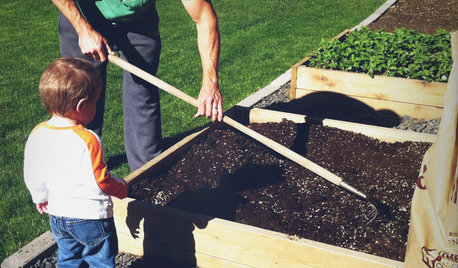
GARDENING AND LANDSCAPINGBuild a Raised Bed to Elevate Your Garden
A bounty of homegrown vegetables is easier than you think with a DIY raised garden bed to house just the right mix of soils
Full Story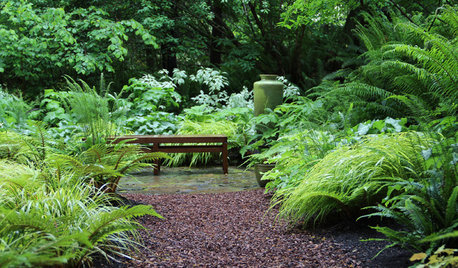
GARDENING GUIDES10 Solutions for Soggy Soil
If a too-wet garden is raining on your parade, try these water-loving plants and other ideas for handling all of that H2O
Full Story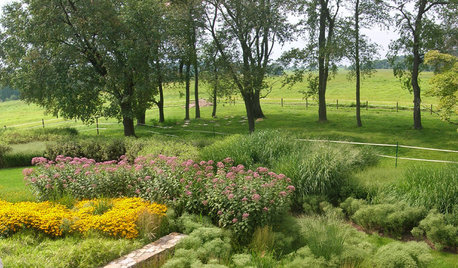
GARDENING GUIDESHow to Stop Worrying and Start Loving Clay Soil
Clay has many more benefits than you might imagine
Full Story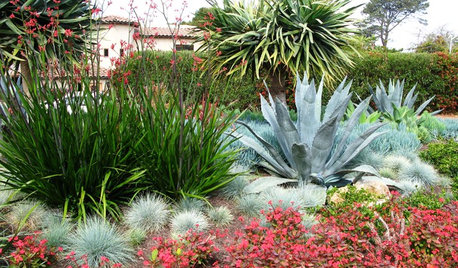
GARDENING GUIDESGardening Solutions for Dry, Sandy Soils
Has your desert or beachy site withered your gardening creativity? Try these ideas for a beautiful, easy-care landscape
Full Story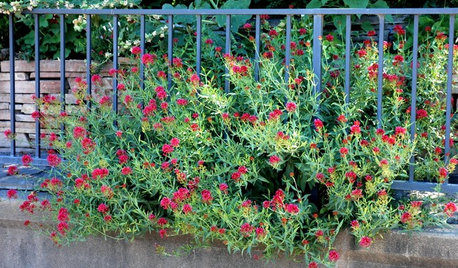
GARDENING GUIDESGrow a Beautiful Garden in Alkaline Soil
Got alkaline soil? Learn how to manage it and the many beautiful plants that will thrive in this ‘sweet’ soil
Full Story
GARDENING GUIDESGardening Solutions for Heavy Clay Soils
What’s a gardener to do with soil that’s easily compacted and has poor drainage? Find out here
Full Story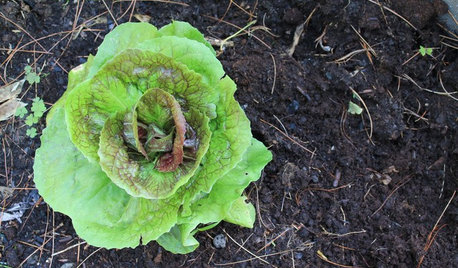
FARM YOUR YARDHow to Get Good Soil for Your Edible Garden
The nutrients in your soil feed the plants that feed you. Here are tips on getting it right — just in time for planting season
Full Story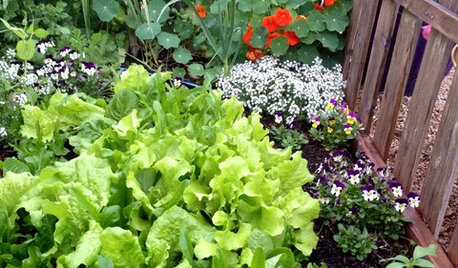
GARDENING GUIDESThe Poop Scoop: Enrich Your Soil With Good Old Manure
Get over the ick factor already — this natural super-ingredient for soil has so many benefits, you'll wonder why you ever went chemical
Full Story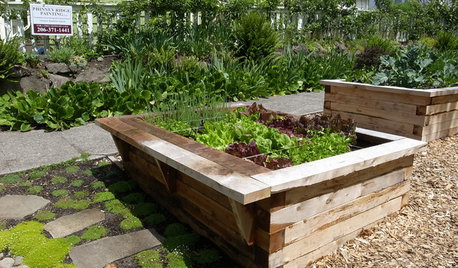
FARM YOUR YARDHow to Build a Raised Bed for Your Veggies and Plants
Whether you’re farming your parking strip or beautifying your backyard, a planting box you make yourself can come in mighty handy
Full Story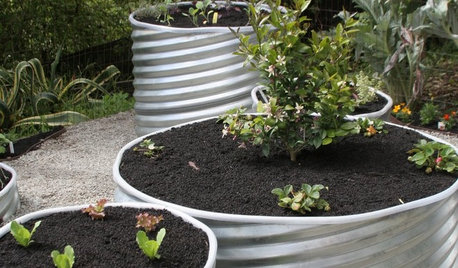
GARDENING GUIDES8 Materials for Raised Garden Beds
Get the dirt on classic and new options for raised vegetable and plant beds, to get the most from your year-round garden
Full Story


gardengal48 (PNW Z8/9)